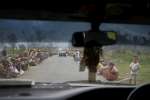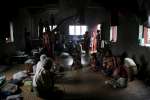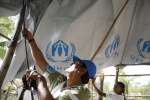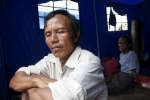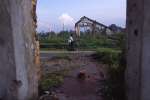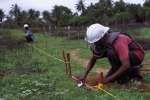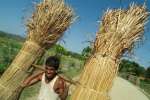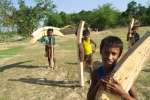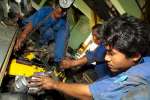- Text size
 |
|  |
|  |
| 
- Français
UNHCR assesses situation in Rakhine as number of displaced put at 35,000
News Stories, 2 November 2012
YANGON, Myanmar, November 2 (UNHCR) – The UN refugee agency has been taking part in inter-agency missions to assess the situation for people in Myanmar's Rakhine state, where the government now estimates that more than 35,000 have been displaced by inter-communal violence.
In the last two days and with government authorization, UNHCR staff have visited villages in Myebon, Mrauk-U and Minbya townships, to the east and north-east of Rakhine's state capital Sittwe. They found groups of displaced people in urgent need of food and shelter.
"The police and army were present in all the villages visited,"a UNHCR spokesman said. "Our staff spoke to displaced people who shared their fears of being attacked again if the troops leave."
Medical staff in the assessment teams were able to treat many of the wounded, including people suffering from burns, gunshot and arrow injuries. There were also a number of new mothers – 14 in two villages – who said their labour had been induced by the violence. They reported having difficulties breastfeeding.
A few families said children had been left behind when they fled. Among the children who made it to safety – many were malnourished.
Most of the displaced people UNHCR staff met said they needed food and shelter material. Aid agencies, including UNHCR, have sent food and plastic sheets but there are still many needs to be met.
One village, Pauk Taw Nagara, is now home to more than 1,500 people who fled from a neighbouring village. The displaced are living in a school and receiving help from the local community. They report having limited cooking materials, with families having to take turns to cook. Many are not eating until late in the afternoon.
Several thousand others have sought refuge in existing camps for displaced people near Sittwe. Concerned about overcrowding in these camps, the authorities are working to find other areas to host the new influx.
On Wednesday, a group of 680 people who had arrived in Sittwe were moved eastwards to Sin Tet Maw. The transfer took place on 15 boats and the group joined some 3,700 people who had already found refuge there. UNHCR has been given access to assess their needs.
As part of the inter-agency response to the situation in Rakhine, UNHCR is sending additional plastic sheeting, mosquito nets and blankets to areas such as Myebon, Kyauk Taw, Rathedaung and Pauk Taw. All assistance is being provided on an impartial basis regardless of background or ethnic origin.
The latest wave of unrest brings to 110,000 the total number of people displaced by inter-communal violence in Rakhine state since June this year. UNHCR has joined the international community in calling for an immediate return to calm between the communities.

